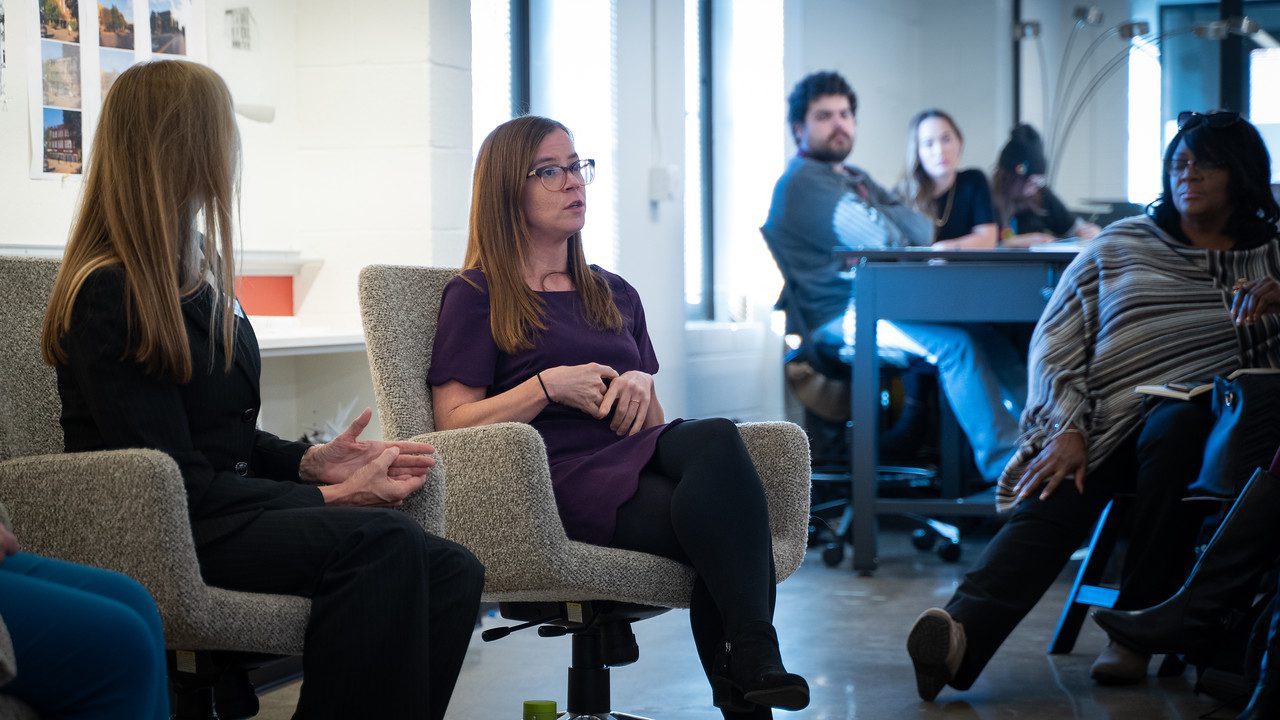Part of Nashville Design Week, Belmont’s O’More College of Architecture, Art and Design hosted a discussion on November 4, bringing together designers and therapists in an engaging conversation about inclusive design. “Room for All: Designing for Inclusion” panelists were Doug Regen, designer and adjunct professor at Belmont, Dr. Missy Bryan, assistant professor in Belmont’s School of Occupational Therapy, Sunny Rosanbalm, executive director of Tucker’s House (501c3), and Jayme Jacobson, assistant professor of architecture at Belmont.
The panelists discussed the evident and experiential impact that designers have on the built environment. Just as physical and occupational therapists address the specific needs of clients, designers are responsible for making environments that accommodate people, and not environments that exclude people.
As many interior design students were in the room, panelists encouraged the future professionals to engage with their clients throughout the entire design process to get a true understanding of how they will use the space.

Jacobson said they may never know what challenges someone has. “Design with and not for. It’s important to get to know people first hand to better understand their point of view. As designers, we tend to design based off of our own bias,” she said. “Try to think outside of your own world view by engaging with those who have different experiences than you.”
Panelists and audience members discussed real-world examples they have witnessed of particular designs excluding some individuals, such as a media room without a wheelchair lift or a crosswalk button located on the other side of rough gravel that would be near impossible to reach in a wheelchair. As those examples were illustrated from brand new constructions, one audience member commented, “We need to be vocal because Nashville is growing so fast, and we want to be actively creating a space to which we all belong.”

Another consideration for design professionals is short-term versus long-term disabilities and how the disability might change over time. Rosanbalm had plenty of advice from her job at Tucker’s House, which partners with the families of children with disabilities by providing the home renovation and retrofitting services and resources necessary to make their homes safe and more accessible.
Rosenbalm addressed two common misconceptions about inclusive design: that it costs more and that it is ugly. “Take curbless showers, for example. They don’t cost more because you’re actually using less material, and they are beautiful,” she said. “We have to consider cost all of the time, but if you design holistically, you can help your clients better understand how specific features will work for them even better in the long run.”

Panelists agreed that sustainability has trended in design recently, and inclusivity can trend in the same way with enough support. They encouraged the future designers to fight for the resources necessary to fund inclusive product development and to be creative in their approach to inclusive designs from the start.



